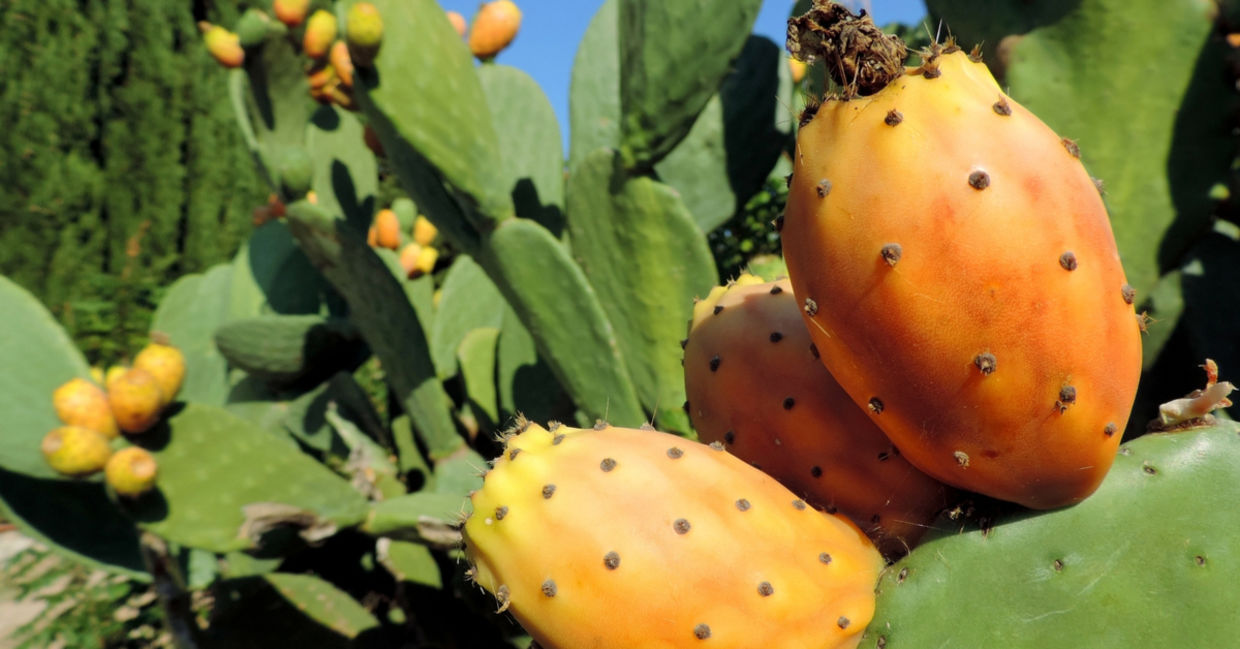
(AnastasiiaM / Shutterstock.com)
Have you ever tried a cactus pear? Yes, it’s prickly surface makes it an unusual looking fruit but it is widely used in Mexican cuisine and could soon become a household staple in many parts of the world.
This fruit from the nopal cactus is really good for you according to Live Strong because it is rich in antioxidants, helps fight inflammation, is safe for diabetics, and has a host of nutritional benefits. There are actually over 200 varieties of cactus fruit with different colored flesh – yellow, white, and pink – and they grow in hot dry places.
Since the world is getting hotter and dryer, researchers from the University of Nevada, Reno, set out to see if the cactus pear could become a superfood that could feed people and animals, remove carbon from the atmosphere and be used as a biofuel according to the university’s Nevada Today. The results of the newly published 5-year study have been very promising.
Providing food and fuel in places where desertification has made it difficult to grow major crops like soybeans and corn that have an upper temperature limit and need more water then is available, will go a long way in a world that is heating up.
“Dry areas are going to get dryer because of climate change,” biochemistry and molecular biology professor John Cushman, with the University's College of Agriculture, Biotechnology & Natural Resources, said in the news release. “Ultimately, we're going to see more and more of these drought issues affecting crops such as corn and soybeans in the future.”
While the study looked at many types of cacti, they settled on the nopal cactus or Opuntia ficus-indica. The fruit and the pads can be harvested for food and the rest of the cactus can be used for sequestering carbon and to use for biofuel according to Cushman.
The plant retains water by closing its pores during the hottest part of the day to limit water loss and opens them at night. Cushman hopes to use the genes from this amazingly adapted plant to add them to other plants to increase heat tolerance.
In 2019, Cushman started a new research project with the US department of Agriculture. The study is being done at the USDA Agricultural Research Service' National Arid Land Plant Genetic Resources Unit in Parlier, California. Working with curator Claire Heintiz, Cushman and his team are looking at ways to boost the production of the cacti and to optimize its growing conditions.
“We want a spineless cactus pear that will grow fast and produce a lot of biomass,” Cushman said.
They are also studying the Opuntia stunting disease which causes cactuses to grow smaller pads and fruits in order to find out more about the disease and how it spreads. They hope to learn how to create tools to diagnose and treat it. This will help with greater food production.
In a world that is also gaining population, finding a new sustainable superfood will go a long way in feeding a planet that will need 50–90 percent more food in 2050. Eating more plant-based foods will also reduce the amount of arable land needed for more food protection.
YOU MIGHT ALSO LIKE:
Drought-Proof Cooling Houses Grows Tons of Healthy Produce in the Desert
Making the Egyptian Desert Bloom Using Recycled Water
Traditional Farming Techniques Are Stopping Desertification







